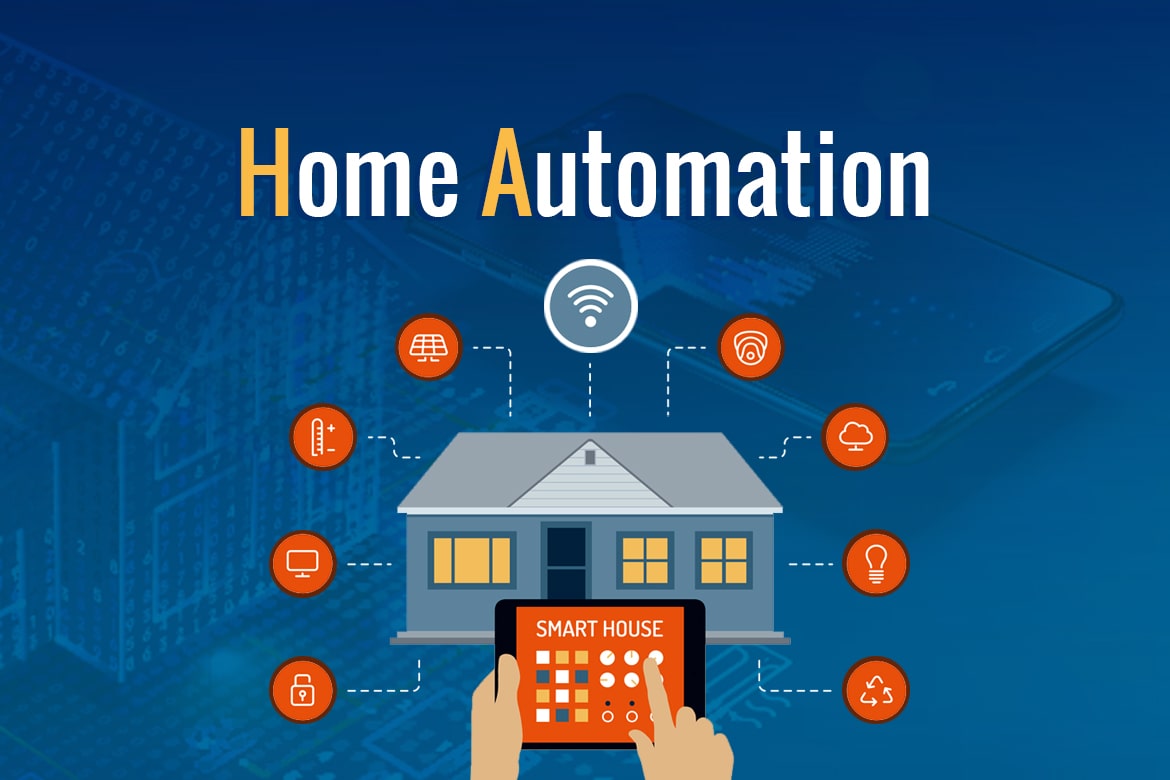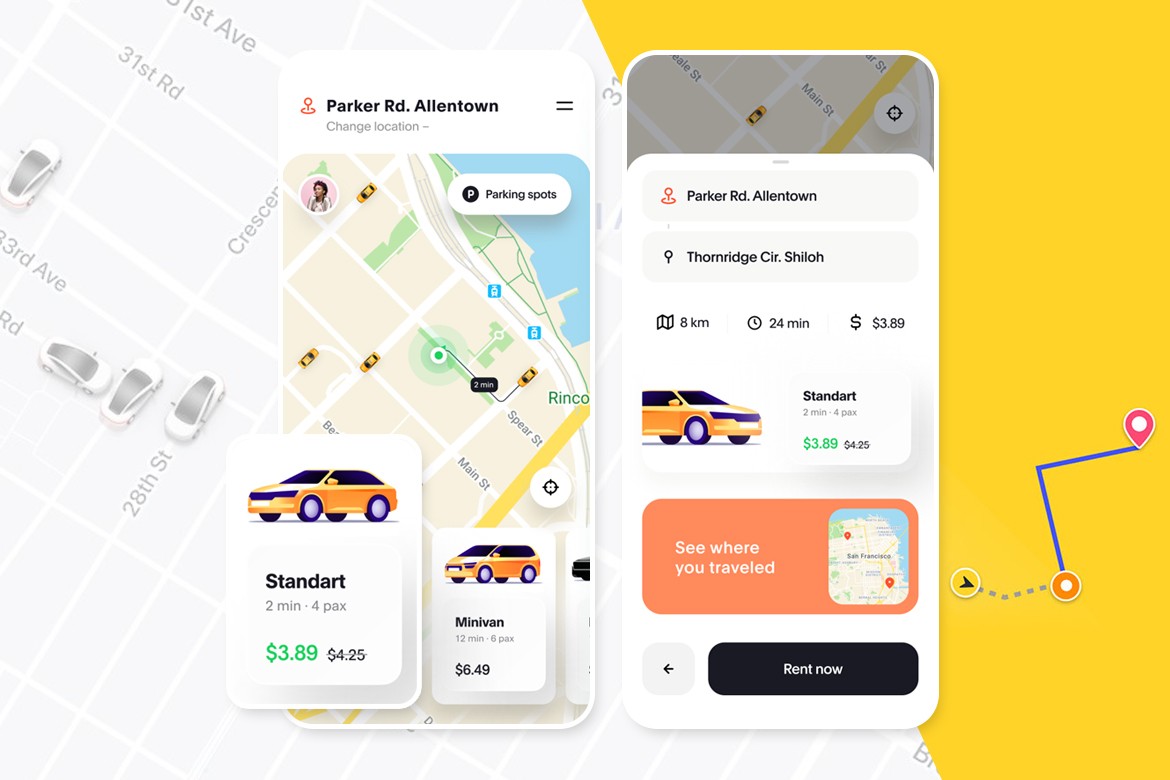Home automation is a real revolution in the automation industry. It was like someone dreamed of turning on and off the light switch automatically, and the dream came true. Smart home automation offers luxury and convenience in our everyday lifestyle. It connects all the connecting devices to the central hub that is called the gateway.
Homes with home automation service are called a smart home. Smart home automation using IoT access to control all smart home devices like lighting systems, cooling and heating systems, electrical appliances, smart ranges, sprinklers, alarm systems, doors, smoke detectors and many more. Home automation is a connected network of hardware devices, electronic interfaces, and communication between all of them. With the help of IoT development services, you can work together and integrate the everyday devices with one another through the internet.
Overall the smart home market is expected to grow from $76.6 billion in 2018 to $151.4 billion by 2024, at a CAGR of 12%. Predictions suggest there will be 70.6 million smart home households by 2023 (nearly double from 34.8 million in 2018). The most popular products in 2019 are video entertainment (43%) followed by smart speakers (17.3%) and home monitoring and security (16.8%) while lighting and thermostat were lower on the list with 6.8% and 2.3% respectively. (source)
Table of Contents
Key Features of Home Automation
Here we will discuss the most important features of home automation development. Without any ado, let’s get started.
- Remote Access
Home automation is all about controlling household devices and systems. Home automation gives you access to control your lighting system, the temperature of the house, and many more settings from your devices like mobile, tablet, laptop or iTouch. The best thing about it is you can perform all these tasks from anywhere in the world.
- Energy Management
Energy conservation has always been the hottest topic. Home automation provides a facility to save energy by automatically switching off the appliances after use. It auto-detects the use of appliances. For example, you are running late for the office and forget to switch off the lights. Here you will get the benefit of having a smart home. After checking that no one is in the house, the system automatically turns off all the lights.
- Expandability
Technology is advancing day by day. It will not be the same after some years like it is today. Technology which can not adapt to something new in it is outdated in some time. But home automation will always be in trends because of its expendability. It is expanding itself in various ways that the chance of being outdated is negligible.
- Interoperability
Interoperability is about many devices which are working together to complete a task. To provide interoperability between devices, there is a requirement of connectivity among these systems. The best example of interoperability is when you leave home, say goodbye, the system recognises it and with the help of motion detector checks that if there is anyone in the house. If there is no one in the house, then it turns off all the unnecessary power consuming devices like lights, fans, AC’s etc.
- Layers of Protection
Home automation systems have multiple layers of protection. That is why smart homes have lesser chances to become a target of theft or anything else like this. Devices like a security camera, alarm, sensor and motion detectors, smart locks, smart door, etc. are used for the high-end security of smart homes. And if there a security breach occurs, the system automatically informs the owner within seconds.
- Customizable
Everyone has a different lifestyle. Manufacturers provide the facility to installers to customize the system according to its lifestyle. Because a system makes you live according to its terms and condition that is not automation that is boundation. And no one likes boundation when it comes to living life. Because automation is beneficial for you only in one condition that is when it suits your lifestyle.
Challenges of Home Automation Development
There are always sides of a coin. If it is good, then there will be bad also. With its enormous features, there are some challenges to home automation. Let’s discuss them without any delay.
- Vulnerable Smart Appliances
All IoT devices, apart from a router, are at risk of being hacked. Hackers and attackers use the platform to attack or hack, which has more vulnerabilities. The more weaknesses a system has, the more will be the chances of being hacked. You might have heard the stories of hackers who have hacked security systems and CCTV and influenced them.
- Multiple Devices and Multiple Apps
Imagine a user has two smart devices at home like Alexa and Google Home. Now, both cannot commute with each other. To operate them differently, the user needs to download two different applications and controllers. This creates a hassle for the user. Whenever the user needs to use a device, he/she needs to open a new app for it that is so burdensome.
- Privacy Exploitation
Approximately 62% of Americans adopt smart home technology for security reasons. With a lot of benefits, the most vital challenge of smart home automation is privacy exploitation. You can understand the scenario with the given image of how IoT devices in smart homes exploit the privacy of a user.

- Security is not Updated With Advancement of Technology
Approximately 70% of smart home devices are in danger of hacking. Smart home automation users can become victims of extortion, theft, arson, and can lose complete control over parts of their home. Excessive privileges can cause significant security weakness. Excessive rights refer to a device’s ability to turn appliances off and on or lock and unlock a door with multiple permission levels.
- Technology and Consumer Bases Don’t Match
Major smart home privacy issues experienced because of the disconnect between users and their experience with technology complicates it. For example, there is an option in a device to turn off the geolocation and microphone, but the user won’t know about the feature and is not able to turn it off. Educating users with technology plays a vital role in the security of smart home automation technology.
- Expectability, Acceptance and Reliability
It is the nature of people to resist something new happening. For elders, installing a smart home automation system can be frustrating as they are less likely to adopt the latest technology. For older people, adding less or too smart technology to the living area or residential building can cause discomfort, and that is not desired at all from their end.
Cost Analysis of Home Automation Development
There are various home automation ideas on which the cost of home automation depends. Like
- In which room you are using an automated system
- Bathroom
- Kitchen
- Outside
- Living Room
- Bedroom
- Garage
- Which home automation brand you choose
- Nest
- Amazon Echo
- Google Home
- Wink Hub 2
- What devices you want to use in your smart home
- Speakers
- Switches
- Alarms, Sensors, Cameras
- Lights
- Security systems
- Sprinklers
- Garage Door Openers
- Smart home theatre systems
It is possible to automate nearly every area of your home; your budget is the only restriction or limits you may find. All the devices, area, and brand cost you around $1400 for the wireless retrofit system for smart home automation in India. And the wired system costs $4200 per room. The charges could vary depending upon the brand, wired or wireless system, area of your house as well as the device which you are using. Most of the home automation companies charge around $1,000 per room for set-up and monthly monitoring fees from $9 to $50 per month. It is possible to purchase your own hub and devices for around $500. By setting up your own system manually by yourself, you can save the installation cost. Prices start about $500 for basic set-ups and go as high as $10,000 for fully automated homes with monitoring.
Conclusion
Global Home Automation Market size was valued at $39,607 million in 2016 and is projected to reach $81,645 million by 2023, growing at a CAGR of 11.2% from 2017 to 2023. Safety & security systems accounted for a dominant share of the market, and are expected to grow at a compound annual growth rate (CAGR) of 11.8% during the forecast period. (source)
Make sure that all of your devices are compatible when adding on. Not every system will work on the same protocol or hub, so double check before adding. Converting to automation can help you lower your energy costs by as much as 60% for lighting and 10%-30% for heating and cooling. It’s best to involve the home automation companies you intend to use at the start of the project to get the most optimized system.














